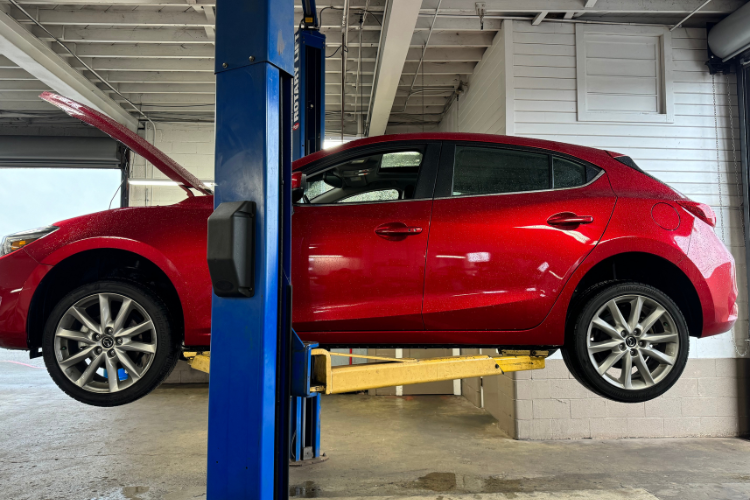You’re cruising along, windows down, tunes up—and then you hear it. Squeeeeak. That high-pitched screech every time you brake. Is your vehicle just being dramatic, or is it trying to tell you something important?
Here’s the truth: not all brake squeaks are created equal. Some are harmless (though annoying), while others are your vehicle’s version of an SOS. Let’s break it down:
COMMON (AND USUALLY HARMLESS) CAUSES OF BRAKE SQUEAKS:
1. Morning Moisture or Dew
Overnight condensation can cause a thin layer of rust on your rotors. When you first drive in the morning, that rust gets scraped off and can cause a temporary squeal. If it goes away after a few stops, you’re probably fine.
2. Lower-quality or New Brake Pads
Some budget-friendly pads are made with harder materials that are more likely to squeak. Even quality pads can squeal a bit during the break-in period. If they’re new and otherwise performing well, a short squeak might not be a concern.
3. Dust or Debris
Tiny rocks, brake dust, or even pollen can get lodged between the pad and rotor. A quick inspection and cleaning might be all you need.
WHEN TO WORRY:
1. Squealing That Sticks Around
If the noise doesn’t fade after a few drives, your brake pads might be worn thin. Most modern pads are designed with a wear indicator that intentionally squeaks to let you know it’s time to replace them.
2. Grinding or Growling Sounds
This is not a squeak—it’s the sound of metal on metal. If you’re hearing grinding, stop driving and get it looked at immediately. Continuing to drive could damage your rotors and lead to a much more expensive repair.
3. Vibrations or Poor Stopping Performance
Noises paired with shaking, pulsing, or slow stopping mean it’s time for a professional brake inspection.
BOTTOM LINE:
If your brakes squeak once in a while and everything else feels normal, it’s probably nothing urgent. But if the squeak is new, persistent, or comes with other symptoms? Don’t ignore it.
Peace of mind (and safe stopping) is always worth it.
If you’re ever unsure, swing by Eureka Brake & Automotive. We’ll take a look, ease your mind, and get you safely back on the road.
Schedule an appointment online or call us now at 707-443-2122!
*Stay connected with us on social media for updates, tips, and special offers throughout the year. We love hearing from you and are always here to help with any automotive questions or needs you might have.






